It’s easy to forget just how important tires are in the operation of your vehicle. When replacing your tires with new ones you’ve never had before, you can actually travel at a higher speed without realizing it! But how do you even tell tires apart?
It’s good to know in order to be more efficient with your fuel and also avoid getting a speeding ticket! Even if you are traveling at a speed that you believe will get you the most mileage, you may be wrong.
Luckily, there is plenty of information out there about speed ratios and how they’re affected when you get new tires.
But when it comes to 265 and 275 tires, the main difference will be in their size. The 265 is just a bit smaller than the 275. While another difference – that we just discussed – will be in how they affect the speed of your vehicle.
Regardless of rim size, whether 17 or 18 inches, the speed difference will actually be 1.26 mph more than what the speedometer is telling you. Both tires are made in the same way, and both are available in rim sizes of 17 or 18 inches.
Below, we’ll go into more information about both tires and compare them in terms of height and width. We’ll also find out if these tires are interchangeable. Let’s get into it!
What Is A 265 tire?A distinctive marker on tires is the code found on the side of them.
This is usually a letter that indicates what kind of car the tire is meant for (for example, if you see the letter ‘P’ on a tire that means it’s a passenger vehicle), followed by 3 digits that tell you the tire width in metric. In this case, 265 means the tire is 265 mm wide.
To know what the width of the tire is in inches, just divide 265 by 25.4. You’ll get 10.43 inches.
You may also see another set of digits after the 265, such as 55, 65 and 70. These numbers indicate the difference between the sidewall distance and the section size. For example, a 265/55 tire means that the sidewall size is 55% of the section width.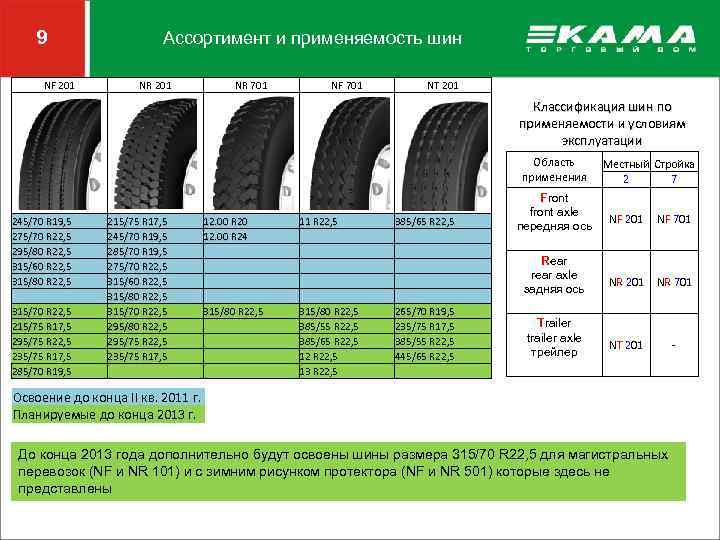
This will then be followed by a letter that indicates the type of tire you are purchasing. For example, the letter ‘B’ means you are buying a belted tire, ‘R’ means you are buying a radial tire, and ‘D’ means – confusingly – that you are buying a bias-ply tire.
What Is A 275 Tire?One of the most popular types of tires for large vehicles, 275 tires are larger in diameter than 265s, although this may not seem like the case at first glance. They may look exactly the same!
This is why tires display their sizes, to make it easier for the customer to see the rim size and purchase the right tire. Usually a 275 tire will require a rim that is about 18 inches, but if you have a larger vehicle you can always go for bigger rims.
What makes 275 tires so appealing is that they are great for those who like to drive a bit faster, and the 275 tire will actually make your car go 1.5 mph faster than what the speedometer is telling you that you’re going.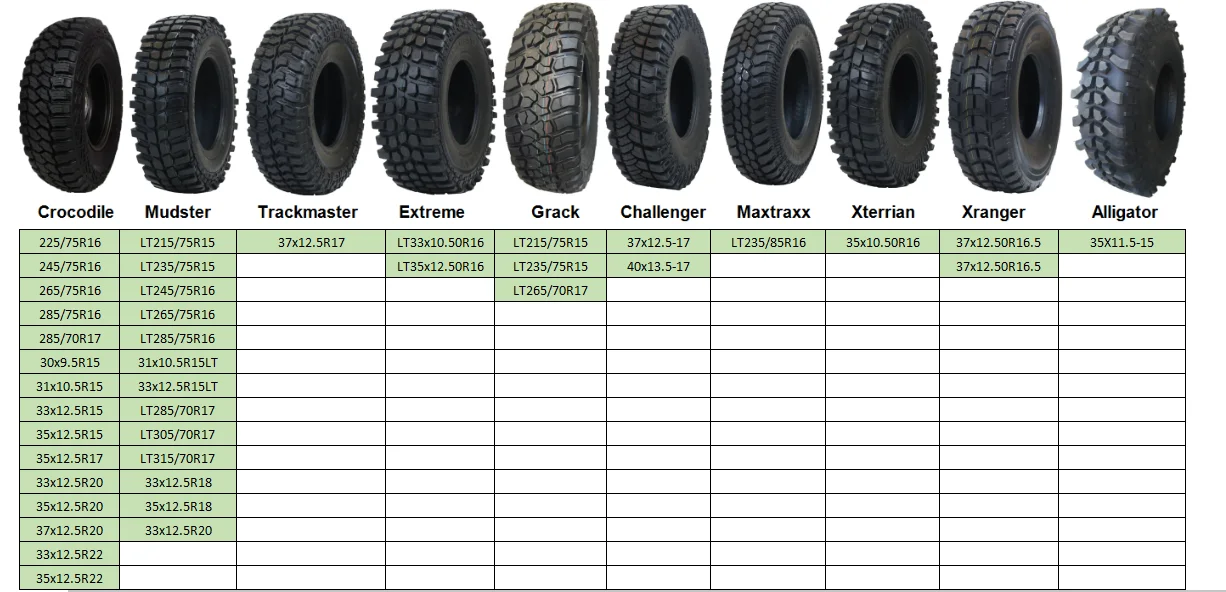
275 tires are also great for using on an RV or motorhome as you can achieve a lot better mileage with them on long trips.
However, they are pricier than 265 tires, so if you’re not an avid RVer or don’t go very far in your larger vehicle, then it is more economical to opt for 265 tires.
But if you’re still not sure which tire would be right for you, let’s go into more detail about these tires and see which ones make more sense for you.
But even after weighing up all the information and there is no clear winner for you, you can always opt for tires that are more compatible with your rims, meaning that you don’t have to worry too much about specifications when buying your tires.
Which Is Bigger? A 265 Or 275?The 275 is just a bit bigger than the 265. When it came to section width, the 265 measured at 10.43 inches while the 275 measured 10.83 inches. Meanwhile, the overall diameter of the 265 was 30.56 inches while the 275 measured 31. 08.
08.
The 275 also beat the 265 when it came to sidewall height, measuring at 7.04 inches while the 265 measured at 6.78 inches. The radius of the 275 was 15.54 while for the 265 it was 15.28.
Meanwhile, the circumference of the 275 was 97.64 while the 265 was 96.01
The only thing the 265 had the 275 beat on was revolutions per mile, with the 275 measuring at 648.91 while the 265 registered at 659.95. But interestingly both tires fit on the same rim, despite these small differences.
So while you can upgrade your rim size from a 16 or 17-inch to an 18-inch rim, the 275 will still be the bigger tire in every area except revolutions per mile.
Which Is Wider? A 265 Or 275?While the 275 is wider than the 265, it’s not by a huge amount. In fact, it’s only a 0.4 inch difference between the 275 and the 265, the same difference as upgrading your 16-inch 275 tires to 17-inch 275 tires.
But while this difference is hardly anything and shouldn’t have too much of a negative impact on the mileage per gallon, the thicker tires may be more prone to hydroplaning.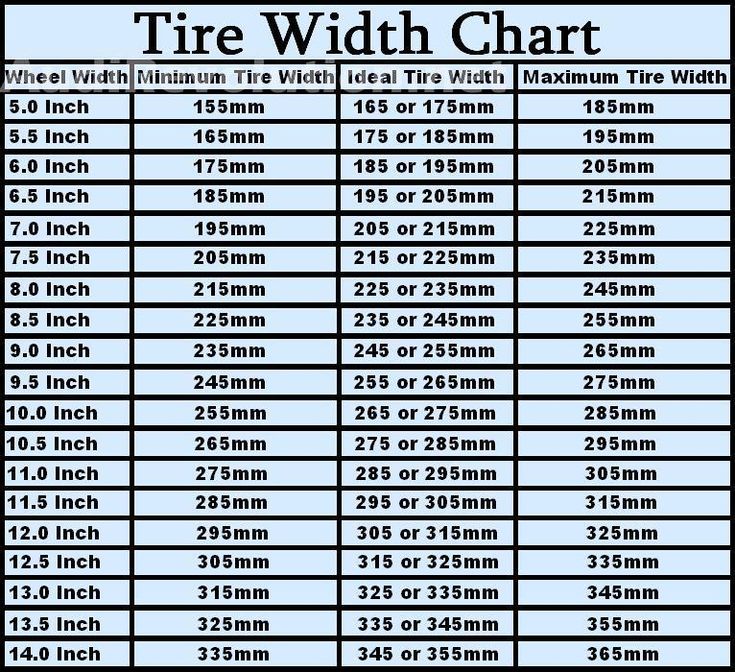 Thinner tires handle wetter conditions and slippery roads with lots of puddles better than thicker ones.
Thinner tires handle wetter conditions and slippery roads with lots of puddles better than thicker ones.
Thicker tires also have less traction on pretty much all surfaces except for pavement and thick, deep sand. When it comes to driving over wet grass or clay-like surfaces, the 265 tire has the edge over the 275.
When you change your tires, you may not notice much of a change on the speedometer readings at first. When comparing how the 265 tires and 275 tires affect speed, the actual speed was just over 1 mph more than the speedometer reading.
Still, this makes all the difference when you are approaching speed traps.
Which Is Taller? A 265 Or 275?Much like the width, there is only a small difference between the height of these tires and how tall they are. The 275 is once again bigger at 31.1 inches, while the 265 tires measure at 30.6 inches.
With regard to how this affects the performance, there isn’t a lot of difference, especially when it comes to speed. Depending on what kind of vehicle you’re driving, you’ll see different results.
Depending on what kind of vehicle you’re driving, you’ll see different results.
The speedometer might measure lower than the actual speed you’re driving, it might be higher, or it might be accurate.
However, because the 275 is taller than the 265, you’ll get fewer revolutions per mile which could be good news for your tires and make them last a bit longer. Because the surface of the tire will experience less contact with the road, they won’t wear down as quickly as the 265.
Overall, the difference between the heights of these tires is miniscule, and you may not even notice that much of a difference when you’re driving, as long as you stick to the same tire code when the time comes to get new ones.
Can You Fit A 275 Tire On A 265 Rim?This may come as a surprise, but yes you can fit both tires on the same rims. The crucial measurement will be the last two digits on the identification number of the tire. This could be 16, 17, or 18. These digits tell you what rim size fits your tire.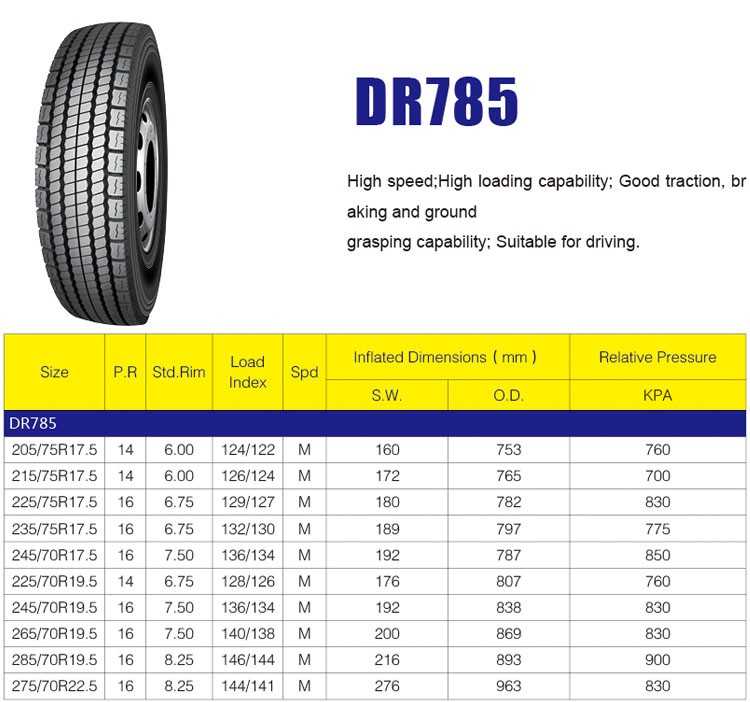
So if both of your 265 and 275 tires end with 16, 17 or 18 then they will fit on the same rim.
Despite the 275 being slightly larger than the 265 tire, the truly noticeable difference will be in the price, as the 275 will cost more… even though there is more construction material packed into the 265.
There will be a noticeable difference in your speed, but this won’t be too obvious due to the size difference between both tires, and what the speedometer is telling you won’t be the actual speed you’re driving at the time.
Again, we can’t stress enough how important it is to check the digits on your tires, as these tell you all the information you need on finding the right set of tires for your vehicle.
Can You Replace Your 275 Tires With 265 Tires?Yes, you can replace your 275 tires with 265 tires as long as you’re replacing all your tires. This may seem obvious, but it’s crucial.
When changing all 4 tires on your vehicle, you need to pay attention to the last 2 digits in the code to ensure they’re the right size for your vehicle. For example, you can’t put 265/70R16s on 17-inch wheels.
For example, you can’t put 265/70R16s on 17-inch wheels.
However, there is an exception to this rule. You don’t have to follow it if the manufacturer states you don’t necessarily have to. Or, this rule can be broken in an emergency situation.
If you have a flat tire, and you don’t have the right size tire that will match up with the rest of the tires. But this should only be a short-term temporary fix to get you back on the road again. You should get the correct-sized tires as soon as you can.
It’s also worth remembering that 265 tires, 275 tires, and indeed all other tires have different ratings. We mentioned this at the beginning of the article, but look out for letters like ‘P’ as these indicate what type of vehicle the tire was designed for.
You wouldn’t want to change your car tire with a tire that has ‘LT or ‘ST’ on it, as these are tires designed for light trucks and special trailers respectively.
It’s a common misconception that a tire is just a tire, but tires are very specific so always double-check what kind of tires you’re fitting your car with.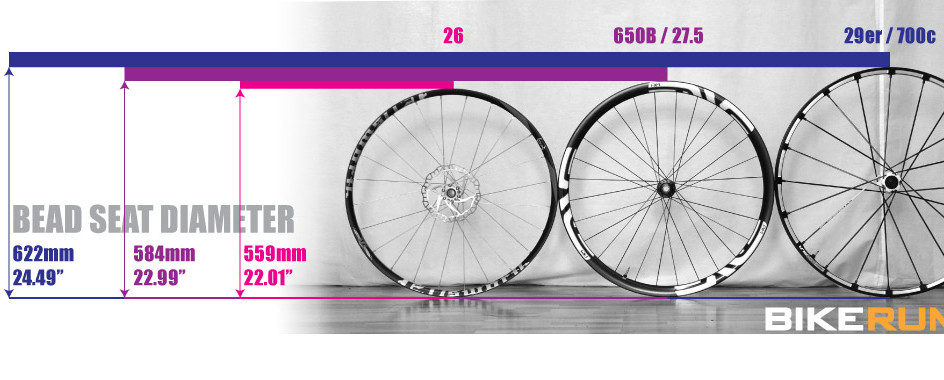
This is a tricky question to answer. We would say yes… but it all depends on the circumstances. These tires are interchangeable if you’re changing all the tires on your car at once.
You can swap out a 265 for a 275 and vice versa without having to compromise on performance and – most importantly – safety.
But you can’t just change one 265 tire for a 275 one when the rest of your tires are 265s, and you can’t change a radial tire for a bias tire when the rest of the wheels have bias tires.
This is because each tire will have different capabilities when it comes to speed and load-carrying. When changing your tires, if they have different letters and numbers corresponding to those two categories then you can’t use them interchangeably.
Replacing tires is simple enough, but it’s not just a case of replacing your tire with any old tire. Having an understanding of all the different codes makes your life so much easier when it comes to keeping safe and keeping your car performing well.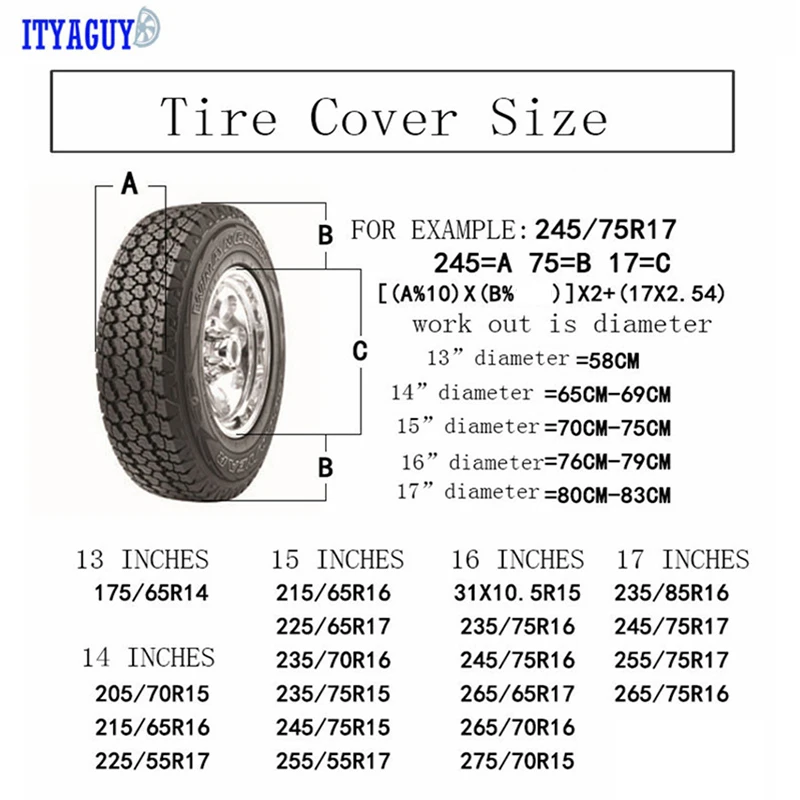
After all, this is what the codes on tires are made for, so you can drive safely and make sure your car has the same tires on all 4 wheels.
All that being said, let’s take a look at the 265 and 275 tires in more detail, and look at these two tires with a rim size of 17-inches.
265 70R17 Vs 275 70R17: What’s The Difference?For a brief overview, let’s take a quick look at the comparison chart below to see the differences between these two tires. All measurements are in inches.
| Category | 265 70R17 | 275 70R17 |
| Circumference | 99.27 | 101.3 |
| Overall Diameter | 31.60 | 32.16 |
| Radius | 15.80 | 16.08 |
| Revolutions Per Mile | 638.23 | 627.12 |
| Rim Diameter | 17 | 17 |
| Section Width | 10.43 | 10.83 |
| Sidewall Height | 7.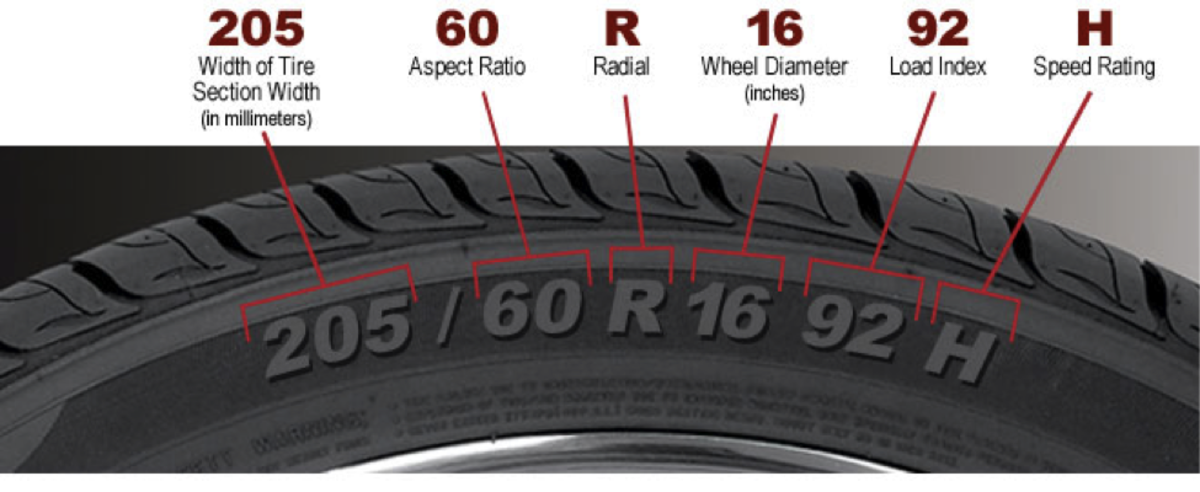 30 30 | 7.58 |
When it comes to which tire performs better, this will all depend on the manufacturer and the quality of the materials used. Not all tires are created equal and some will definitely be of a lower quality than others.
But this chart is mainly concerned with stats and specs rather than the manufacturing process of the tires and their quality. When it comes to the top-rated tire brands there may be only slight differences in certain specifications and stats.
How Big Is The 265 70R17 In Inches?As we discussed previously, 265 is the measurement of the tire in millimeters, and equates to 10.43 in inches. This number is also sometimes known as the section width.
The ‘70’ refers to 70%, which can be hard to wrap your head around what that means in inches, but it’s basically the distance between the sidewall height and the outside of the tread, which is 7.3 inches.
The tire’s circumference will be close to 100 inches, while the radius will be about 16 inches in size.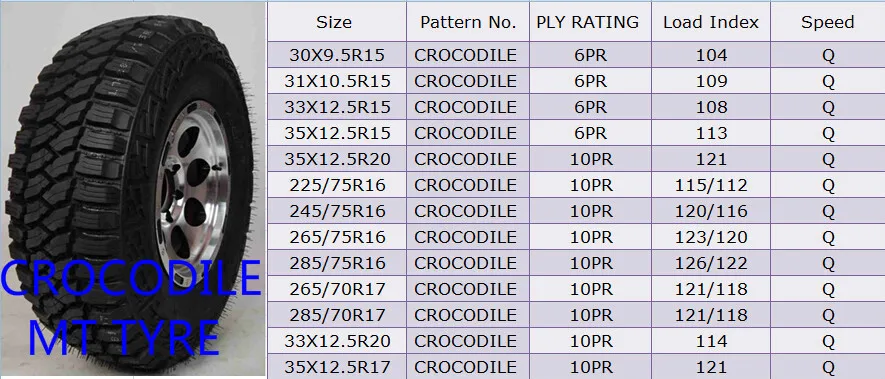 The 17 simply means 17 inches.
The 17 simply means 17 inches.
This can be a bit confusing when you first read the code, as it is not a metric measurement, and the fact that the code doesn’t stick to one mathematical system does complicate matters!
The overall diameter of the 70R17 will be about 31.5 inches in size. But while this makes it larger than the 265 70R17, it won’t have too much of an impact on the performance.
Upgrading Your F150 With 275 TiresWhen you are increasing the size of your tires (going from a 265 to 275), there is more to take into account other than just load and speed, etc. Another thing to be mindful of is the vehicle clearance inside the F150’s wheel well.
A subpar clearance will be unable to support the upgrade, and your tire will wear out quickly thanks to excessive rubbing. But there are some benefits if your wheel clearance can accommodate a wider tire.
One benefit will be improved lateral traction, which actually makes your vehicle look a lot better following the upgrade! A taller tire will also close the fender well gap between the tire and your truck, making for a gentler ride and more ground clearance.
Unfortunately, if you drive a car you will not be able to reap the benefits of upgrading to a taller tire. This is because a truck like the F150 will be able to better handle the size difference.
For even more ground clearance and a better ride in your F150 you can even go taller than a 275 if you wish!
Upgrading Your Tacoma With 275 TiresRefer to our comparison chart above for tires matching this vehicle. However, you may notice a difference in your speed when swapping out the tires on your Tacoma for 275 tires. It is only a slight difference admittedly, but your speed will increase when using 275s rather than 265s.
For example, at 20 mph, you will be going 0.35 mph faster with 275s, and going at 100 mph you will be going 1.74 mph faster.
But apart from that, your Tacoma will look and feel the same with 275 tires. In fact, you may only be able to tell the difference by checking out the codes. But – as always – codes are critical if you frequently find yourself carrying heavy loads.
If this is the case, check what the load level and speed maximums are by reading the code on the side of the tire.
Final ThoughtsCode is king! When the time comes to change your tires, making sure the codes on your tires match is crucial for keeping you and your passengers safe and so your vehicle can perform at its best.
All four tires need to be labeled with the same code, and as long as that’s the case, you’re good to go!
But if you have any questions, your local tire dealer is sure to point you in the right direction and provide clarity. You can also consult your owner’s manual to see what tires are right for your vehicle.
https://www.youtube.com/watch?v=Z_tfNKG2tnoVideo can’t be loaded because JavaScript is disabled: Off-Road Tire Size Comp: 265 vs 275 vs 285 KO2, Ridge Grappler, KM2, MTZP3, MTR (https://www.youtube.com/watch?v=Z_tfNKG2tno)
Madeline Cooper
My name is Madeline Cooper, and I have now been living and traveling across the states in my RV for the past 8 years. It has been such an amazing experience, and I have learned so much along the way.
It has been such an amazing experience, and I have learned so much along the way.
Through this blog, I want to share all of my hints and tips, along with reviews of the best RVing accessories. I hope this blog will help others with their RV trips, and make traveling easier for you.
Latest posts by Madeline Cooper (see all)
Tires are not just tires. They are actually a vital part of vehicle operation. In fact, if you do not get the same tires when you buy new, you may be traveling at a faster speed and the police radar unit is not in error. be prepared to pay that speeding ticket fine.
The difference between them will be in their overall size as you have just seen the 265 is slightly smaller than the 275. Plus, the difference will be in the actual speed of the car. No matter the rim size, 17 or 18, the speed difference is 1.26 mph over what the speedometer reads.
To learn about tire differences just continue to read our article.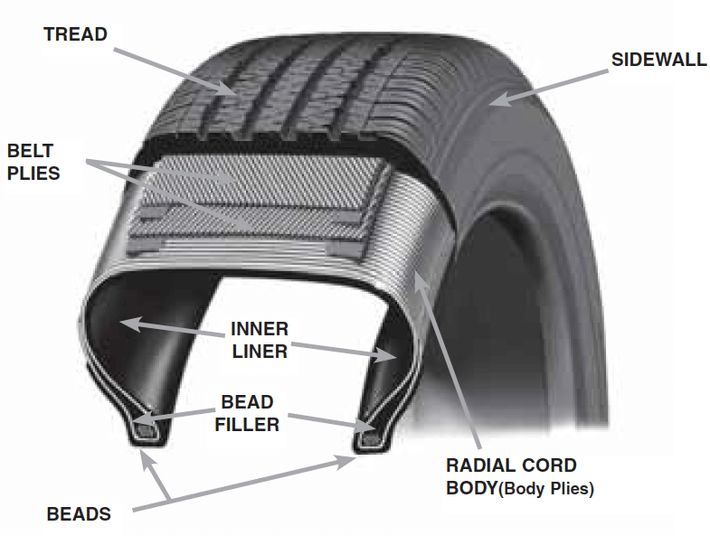 It has the information you want to know about as most tire store clerks know little about how tires affect vehicle operation
It has the information you want to know about as most tire store clerks know little about how tires affect vehicle operation
265 vs 275 Difference 101
Is a 275 Tire Wider Than a 265?
Which Tire is Bigger 265 or 275?
What is The Difference Between a 265 and 275 Tire?
Will a 275 Tire Fit On a 265 Rim?
What Does 265 Mean On a Tire?
265 vs 275 Tire Height
What is 265 70R17 in Inches?
265 70R17 vs 275 70R17
Are 265 and 275 Tires Interchangeable?
Can I Use 275 Tires Instead of 265?
265 vs 275 Tires Tacoma
265 vs 275 Tires F150
Yes, it is but the width difference is not as great as you might imagine. There is about a .4 inch difference with the 275 tire being the wider one. This difference is the same when you change from a 275/70/16 to a 275/60/17 tire model.
This difference is not that great and shouldn’t affect mileage per gallon but it may have the fatter tires hydroplaning a little easier. Thinner tires are better for wet and watery roads that have lots of puddles on them.
Thinner tires are better for wet and watery roads that have lots of puddles on them.
Then the fatter tire will have less traction on most surfaces. Pavement and deep sand being the two exceptions to that rule. The 265 tire should be better when you are trying to cross wet grass or clay than the 275.
Then when you change tires, your speedometer may not reflect the change. In one comparison between these two tires, the actual speed was over 1 mph more than what the speedometer registered.
In another comparison, the actual speed was about 1 mph slower than what the speedometer registered. This can make a difference when you are nearing speed traps.
In every category that was used to compare size, the 275 is slightly larger than the 265. For section width, the 265 came in at 10.43 inches while the 275 measured 10.83 inches. The overall diameter had the 265 at 30.56 inches and the 275 at 31.08 inches.
Even the sidewall height went to the 275 as it measured 7. 04 inches and the 265 measured in at 6.78 inches. The radius was 15.54 inches for the 275 and 15.28 for the 265. The circumference for the 265 was 96.01 and the 275 was 97.64.
04 inches and the 265 measured in at 6.78 inches. The radius was 15.54 inches for the 275 and 15.28 for the 265. The circumference for the 265 was 96.01 and the 275 was 97.64.
The only place that the 275 lost this comparison was in revolutions per mile and the 265 registered 659.95 to the 275’s 648.91. What is interesting is that despite these little differences, the 265 and the 275 both fit on the same rim.
You can change rim sizes to an 18 from a 17 inch or a 16-inch rim and the 275 will still be the larger tire. Except in the revolutions per mile.
In terms of construction material, there is basically no difference between the tires. Also, when it comes to rim size, you can get both sets of tires in 17 and 18-inch sizes so there is no difference there.
The difference between them will be in their overall size as you have just seen the 265 is slightly smaller than the 275. Plus, the difference will be in the actual speed of the car.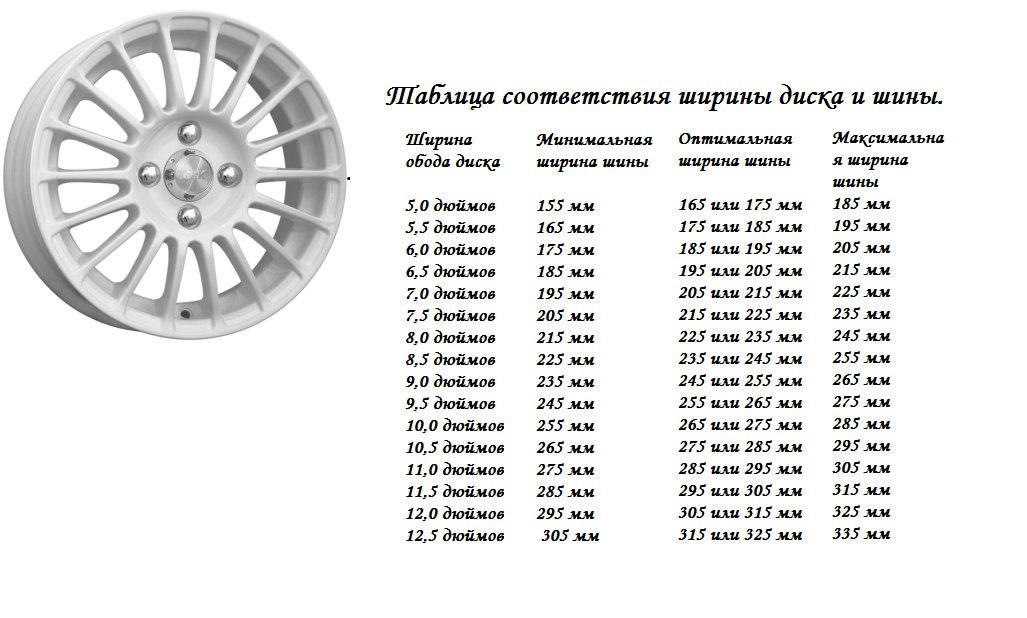 No matter the rim size, 17 or 18, the speed difference is 1.26 mph over what the speedometer reads.
No matter the rim size, 17 or 18, the speed difference is 1.26 mph over what the speedometer reads.
This is important information if you do not want to get a ticket and you want to conserve your fuel. If you think you are traveling at a speed that will bring you the most gas mileage from a tank of gas, you may be unknowingly making a mistake.
There are plenty of tire comparison charts available on the internet to help you learn the difference in speed ratios when you change your tires to a different series. Those charts will help you calculate your fuel budget better and more accurately.
Yes, both tires can fit on the same rims. The key measurement will be the last two digits in the tire identification number- 275/60R/17. That 17 tells you the rim size the tire can fit on. When the tire series numbers look like this 265/65R/18 and 275/65R/18 that tells you both tires will fit on the same rim.
While the 275 tire is slightly larger, the only real problem you will have is in the purchase price.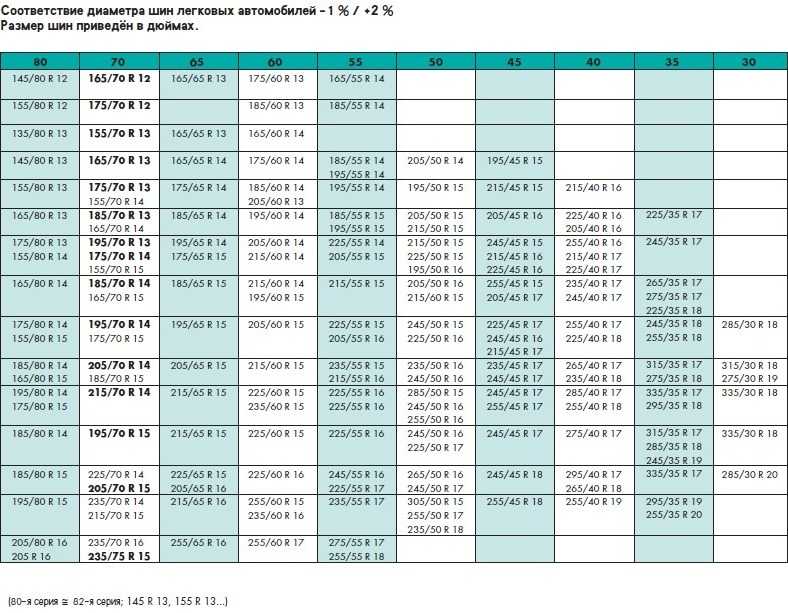 The 275 should be more expensive than the 265. It does take more construction material to make than the 265.
The 275 should be more expensive than the 265. It does take more construction material to make than the 265.
Also, you will notice a difference in your speed although, as we have said, that difference may not be obvious due to those size differences between the 2 tires. What you are reading on your speedometer may not be your actual speed at the time.
The numbers on the side of the tire are not there for show. They provide you with all the information you need to find the right set for your vehicle.
When you are looking at tires you will see a code written on the side. There usually is a letter first and the letter ‘P’ stands for a passenger vehicle. That is the type of car the tire is made for.
The next set of 3 digits will tell you the tire width in metric. The 265 actually means 265mm wide. To get the width in inches you need to divide 265 by 25.4 and the result will be 10.43 inches wide.
The code doesn’t stop there as there are additional numbers and letters to understand. After the 264 you may see something like 55, 65, 70 and those numbers are telling you the difference the sidewall distance is to the section size. For example, a 265/65 is saying that the sidewall size is 65% of the section width.
After the 264 you may see something like 55, 65, 70 and those numbers are telling you the difference the sidewall distance is to the section size. For example, a 265/65 is saying that the sidewall size is 65% of the section width.
The next letter is telling you the type of tire you are buying. R in the 265/65R is saying you are buying a radial tire. A ‘D’ stands for a bias-ply tire and a ‘B’ stands for belted tires.
The code is important to understand as it helps you get the right tire when you are just buying one or two.
There is a slight difference between these tires when it comes to how tall they are. Again, the 275 comes out as the bigger of the two models at 31.1 inches, and the 265 measures in at 30.6 inches.
That is not a lot of difference when it comes right down to performance. The speed of the vehicle will be different and depending on the vehicle you drive it can be higher, lower than the speedometer reading, or right on the money.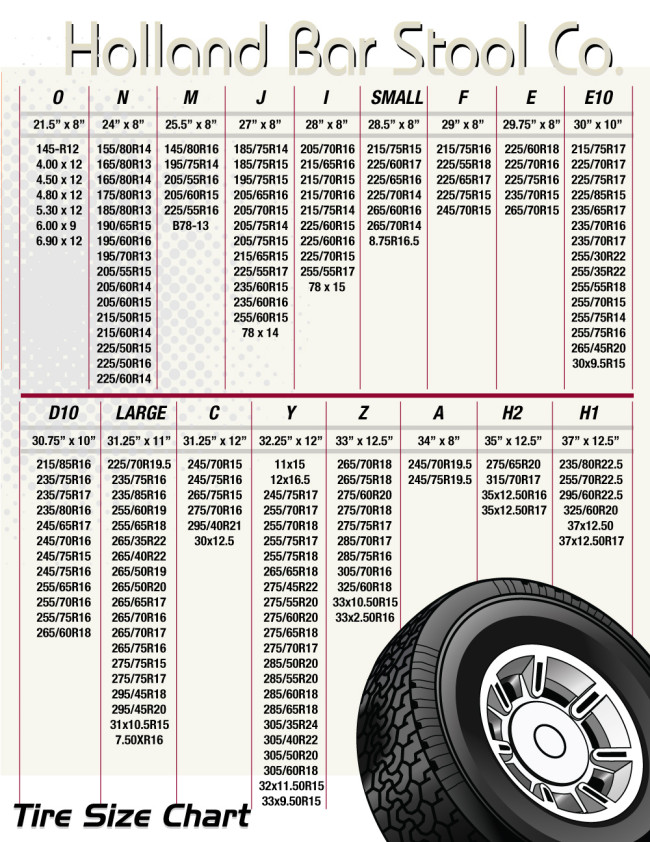
Because of the extra height in the 275, you get fewer revolutions per mile which may help your tires last a little longer. They may not be worn down as quickly as a 265 because the surface of the tire is not rubbing on the road as much as the 265 will.
The height is not a major difference and you may not realize or feel any change when you drive your car. As long as you have the same code on each tire when you replace them.
265 is the millimeter measurement of the tire and the equation to convert is simple. Just divide 265 by 25.4 and you will get 10.43 inches. That number is often referred to as the section width.
It is hard to translate 70% into inches but the distance between the sidewall height, from the outside of the tread, is going to be 7.3 inches. The circumference of the tire will reach almost 100 inches, while the radius will be almost 16 inches in size.
The 17 is always 17 inches and not a metric measurement which may confuse people when they read the code. As you can see the code does not follow one mathematical system when relaying its information.
As you can see the code does not follow one mathematical system when relaying its information.
The overall diameter will be roughly 31 1/2 inches in size. The 275 will be a little larger than the 265 and should not affect overall vehicle performance.
This quick comparison chart should help you see the differences between the two tires in seconds. All measurements are in inches unless noted otherwise:
| Category | 265/70R17 | 275/70R17 |
| Section width | 10.43 | 10.83 |
| Rim Diameter | 17 | 17 |
| Overall diameter | 31.60 | 32.16 |
| Sidewall height | 7.30 | 7.58 |
| Radius | 15.80 | 16.08 |
| Circumference | 99.27 | 101.03 |
| Revolutions per mile | 638.23 | 627.12 |
As for performance, that will depend on the manufacturer and the quality of the materials that the company places in its tires.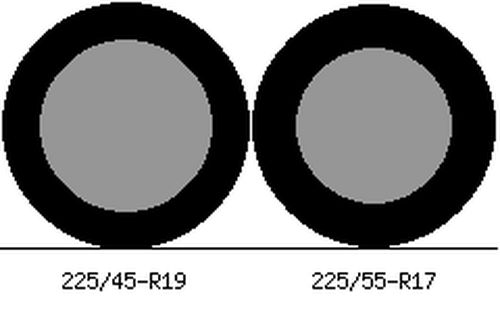 Not all tires are made the same and there are inferior models you should watch out for.
Not all tires are made the same and there are inferior models you should watch out for.
Any comparisons made here or in the rest of the article are just looking at the stats and specs and not how the tires were made and with what quality. You will find differences between the top brand names as well but those differences may be slight.
Yes and no is the best answer that can be given to this question. The yes part comes in when you are changing all the tires on your car at the same time. You can exchange 4 265/70R17 with 4 275/70R17 tires and not lose out on performance or safety.
What you can’t do is change one 275/70R17 with one 265/70R17 tire. You will have performance issues, as well as safety issues when you do this. Nor can you put one radial tire on a car that has 3 bias tires on the other wheels.
The same goes for belted tires, as you can’t put one belted tire on a car that has 3 radial tires on the other wheels.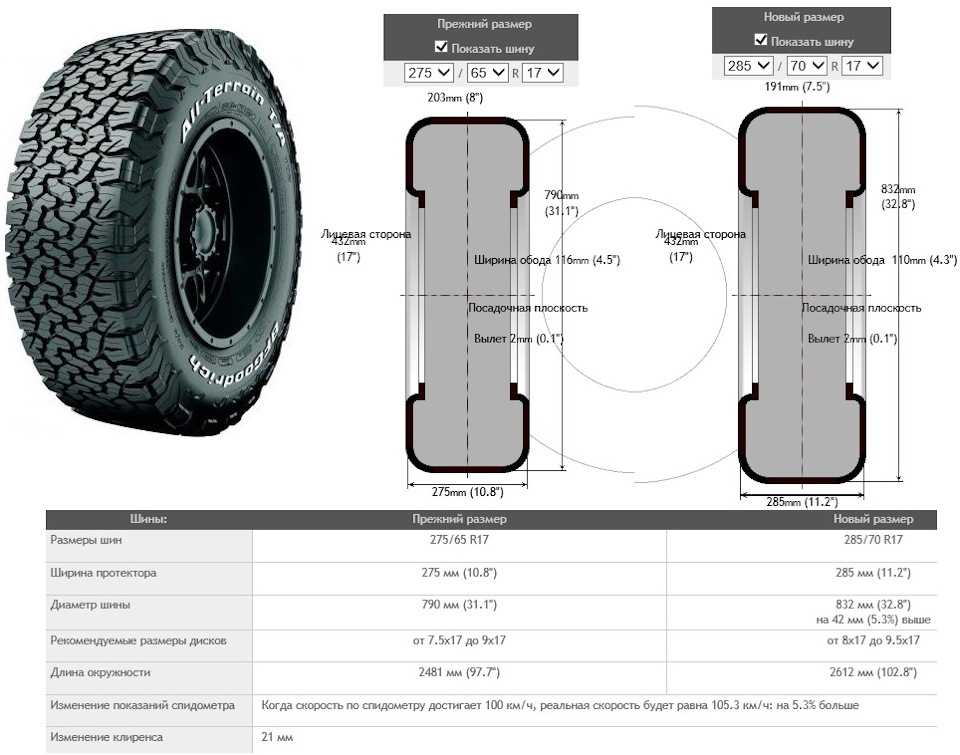 Then each tire has different load-carrying and speed capabilities. That information is often listed as 89H or something similar. You should not mix tires that have different numbers and letters for those two categories.
Then each tire has different load-carrying and speed capabilities. That information is often listed as 89H or something similar. You should not mix tires that have different numbers and letters for those two categories.
While replacing tires may seem to be a simple procedure, it can be quite complex once you understand what all the codes mean. For maximum safety and performance, you need to put the same tires on all 4 wheels.
That is what the code is designed to do. help you get the same tires on your vehicle.
Yes, you can as long as you follow the above information. You cannot put one 275 on with three 265 tires and vice versa. if you are going to change all 4 tires, then you need to look at the last 2 digits in the code to get the right size to fit the wheels on your car.
In other words, you can’t put four 275/70R18s on 17-inch wheels. Those last two digits tell you the wheel size the tires will fit on. You would need four 275/70R17s or 4 275/60R17s and so on.
One exception to this rule is if the manufacturer of the vehicle says it is okay to do so. Another exception would be if you got a flat and you did not have the right size tire to match the other tires except for wheel size. A temporary fix is okay for a very limited time.
Keep in mind that 265, 275s, and other tires have different ratings. When you see a ‘P’ in front of the code you know that tire is for passenger vehicles. An ‘LT’ in front tells you those tires are for light trucks, ‘ST’ tires are for special trailers and on it goes.
Tires can be very item-specific so you have to be careful when putting tires on any vehicle or trailer.
The sizes mentioned in our quick comparison chart above are the same for tires matching this vehicle. There is no difference in that aspect. But you will find a difference in the speed at which you are going when you have different tires on your Tacoma vehicle.
The difference is minimal, but you will be going faster when you use 275s over 265s. At 20 miles per hour, you are only going .35 mph faster while at 100 miles per hour you are only going 1.74 mph faster.
At 20 miles per hour, you are only going .35 mph faster while at 100 miles per hour you are only going 1.74 mph faster.
Other than that you will have basically the same look and feel to your vehicle and it will be hard to tell the difference without looking at the codes. The codes will be important if you are going to carry a heavy load. At that time you need to see what the load level and speed maximums are by reading the right letter and numbers on the side of the tire.
When you are changing from a smaller size tire like the 265 to the 275 some other factors come into play than just load, speed, and so on. You have to be careful of the vehicle clearance inside the wheel well of your F150.
If the clearance is not great and won’t support the upgrade then your tire was will wear out faster due to excessive rubbing. When the wheel clearance allows for a wider tire, then you do get some benefits.
One benefit would be better lateral traction and you may get a better cosmetic look to your vehicle when you make the upgrade. Also, if the tire is taller, you can eliminate the fender well gap between the tire and the truck as well as give you more ground clearance and a softer ride.
Also, if the tire is taller, you can eliminate the fender well gap between the tire and the truck as well as give you more ground clearance and a softer ride.
These benefits normally do not happen if you are moving to a taller tire when you are driving a car. Fortunately, the F150 is a truck that can handle the size difference so placing them on your vehicle is not going to be a problem.
It is possible to go even taller than the 275 if you want a better ride and more ground clearance when you own an F150.
It is all in the code. When it comes to tires, matching the code is essential for a safe ride and maximum performance. The key is to make sure to have all four tires labeled with the same code and you should be fine.
If you are not sure, your local tire dealer will make sure for you. Don’t forget to check the owner’s manual if you need help in finding the right tires.
Calculate
| ||||||||||||||||||||||||||||||||||||||||||||||||||||||||||
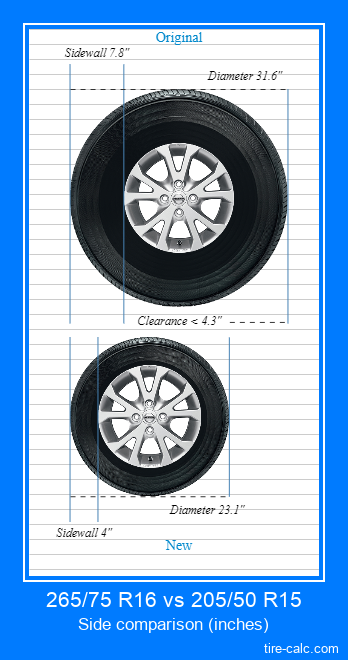
In the table above you can see a detailed comparison of the difference in dimensions, parameters and performance between a 275/65 R17 tire and a 265/65 R17 tire. The results of the calculations are also presented in the form of visual models (infographics), on which the tire with a size of 275/65 R17 is on top, and with a size of 265/65 R17, respectively, at the bottom. The visualization was generated in two projections: lateral (left) and frontal (right). The online calculator compares tires according to the following characteristics: diameter, width, circumference, profile height, revolutions per km, ground clearance change. Additionally, a potential deviation between the actual speed and the speed displayed on the speedometer is calculated, which can occur if the difference between tires 275/65 R17 and 265/65 R17 is significant. nine0009
If you want to compare other tyres, simply select the required parameters in the drop-down fields and click on the green button.
| Side Comparison | Frontal comparison |
|---|---|
home
Articles
* These tables are for informational purposes only and are not intended as a guide to action.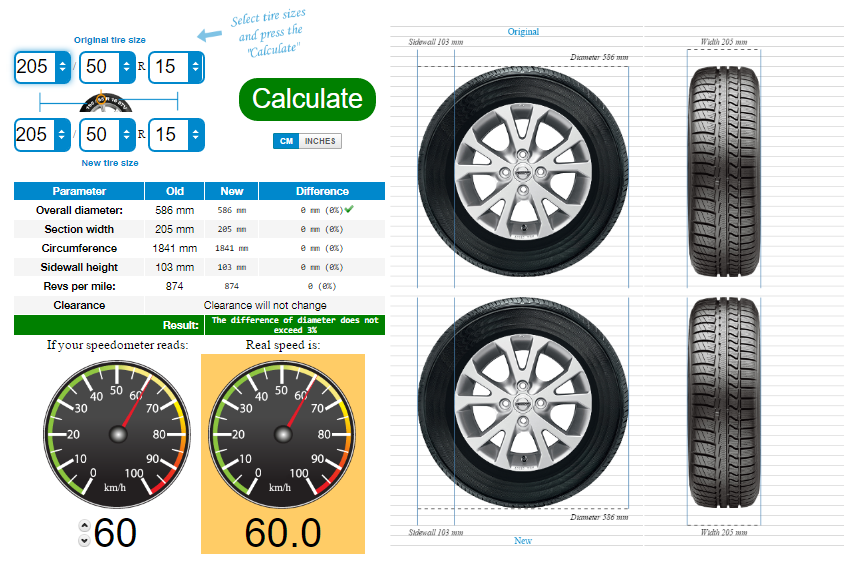 For specific applicability of non-standard discs, please contact the vehicle manufacturer or vehicle dealer. We do not test wheel interchangeability and cannot make recommendations.
For specific applicability of non-standard discs, please contact the vehicle manufacturer or vehicle dealer. We do not test wheel interchangeability and cannot make recommendations.
| Landing width of the disk | Minimum tire width | Optimum tire width | Maximum tire width |
|---|---|---|---|
| 5.0 inches | 155 mm | 165 or 175 mm | 185 mm |
| 5.5 inches nine0010 | 165 mm | 175 or 185 mm | 195 mm |
| 6.0 inches | 175 mm | 185 or 195 mm | 205 mm |
| 6.5 inches | 185 mm | 195 or 205 mm | nine0004 215 mm|
| 7.0 inches | 195 mm | 205 or 215 mm | 225 mm |
7.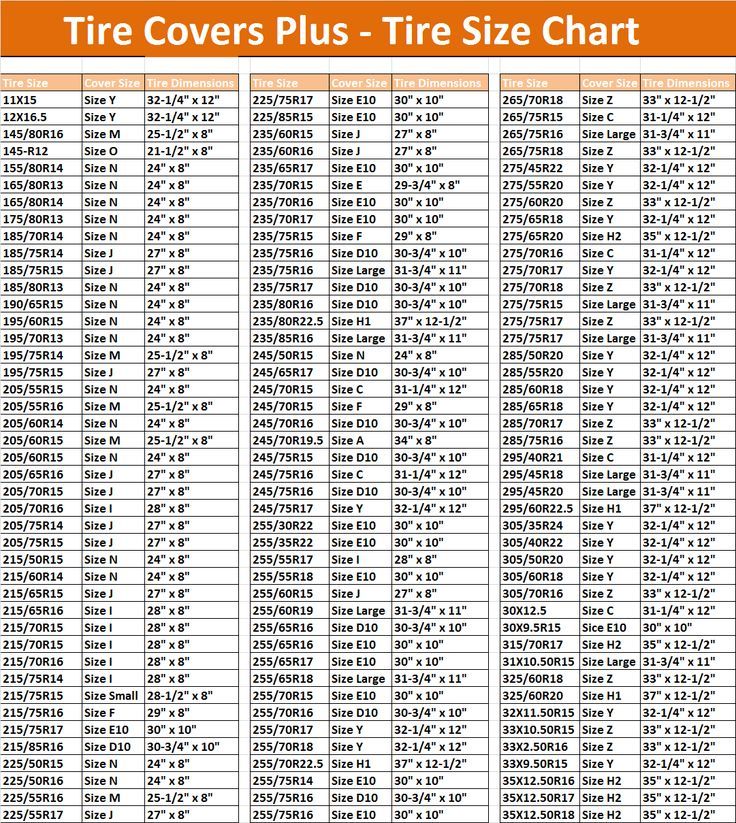 5 inches 5 inches | 205 mm | 215 or 225 mm | 235 mm |
| 8.0 inches | 215 mm nine0010 | 225 or 235 mm | 245 mm |
| 8.5 inches | 225 mm | 235 or 245 mm | 255 mm |
| 9.0 inches | 235 mm | 245 or 255 mm | 265 mm | nine0011
| 9.5 inches | 245 mm | 255 or 265 mm | 275 mm |
| 10.0 inches | 255 mm | 265 or 275 mm | 285 mm |
| 10.5 inches | 265 mm | 275 or 285 mm nine0010 | 295 mm |
| 11.0 inches | 275 mm | 285 or 295 mm | 305 mm |
| 11.5 inches | 285 mm | 295 or 305 mm | 315 mm |
| 12.0 inches | nine0004 295 mm305 or 315 mm | 325 mm | |
12. 5 inches 5 inches | 305 mm | 315 or 325 mm | 335 mm |
| Profile | nine0059 Designation in metric dimensionPermissible range of landing width of the disc | |
|---|---|---|
| 35 Series | 275/35R17 | 9.0-10.5 |
| 335/35R17 | 11.0-13.0 | |
| 345/35R15 | 11.0-13.5 | |
| 40 Series | 285/40R15 | 11.0-13.5 |
| 215/40R15 | 7.0-8.5 | |
| 245/40R17 | 8.0-9.5 | |
| 255/40R17 | 8.5-10.0 | |
| 265/40R17 | 8.5-10.0 | nine0011|
| 235/40R18 | 8.0-9.5 | |
| 45 Series | 195/45/R15 | 6.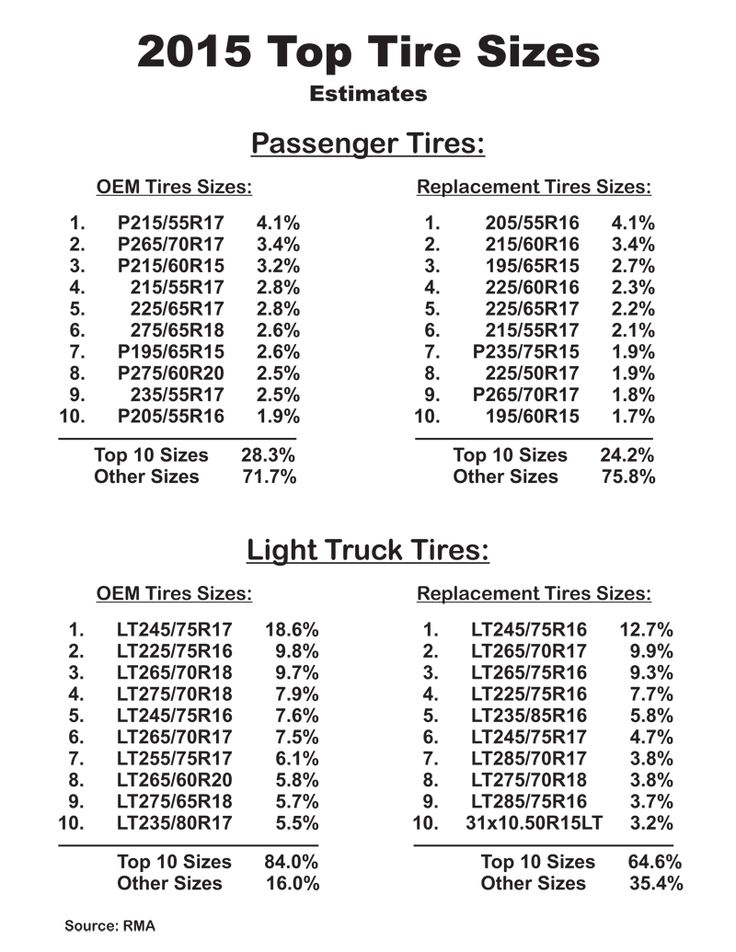 5-7.5 5-7.5 |
| 215/45R15 | 7.0-8.5 | |
| 255/45R15 | 8.5-10.0 | |
| 205/45R16 | 7.0 nine0010 | |
| 225/45R16 | 7.5-9.0 | |
| 245/45R16 | 8.0-9.5 | |
| 215/45R17 | 7.0-8.5 | |
| 235/45R17 | 8.0-9.5 | |
| 255/45R17 | 8.5-10.5 | |
| 50 Series nine0010 | 175/50R13 | 5.0-6.0 |
| 195/50R14 | 5.5-7.0 | |
| 205/50R15 | 5.5-7.5 | |
| 215/50R15 | 6.0-7.5 | |
| 225/50R15 | 6.0-8.0 | |
| 195/50R16 nine0010 | 5.5-7.0 | |
| 205/50R16 | 5.5-7.5 | |
| 225/50R16 | 6.0-8.0 | |
| 235/50R16 | 6.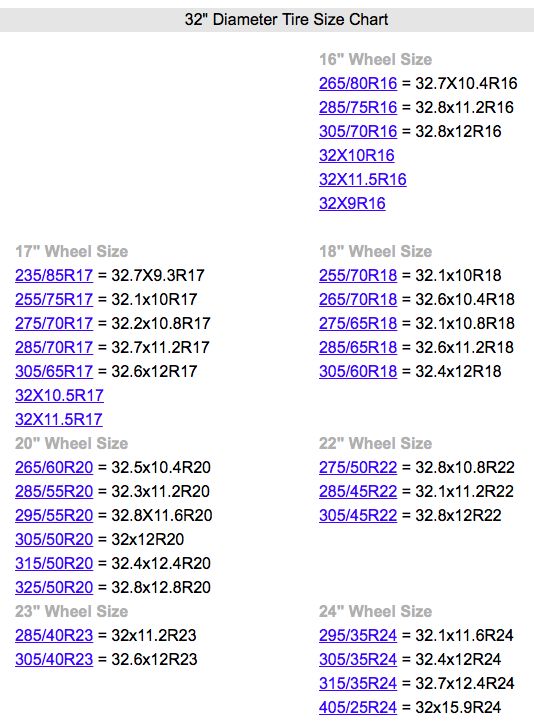 5-8.5 5-8.5 | |
| 215/50R17 | 6.5-7.5 | |
| 55 Series | 205/55R14 nine0010 | 5.5-7.5 |
| 185/55R15 | 6.0-6.5 | |
| 195/55R15 | 5.5-7.0 | |
| 205/55R15 | 5.5-7.5 | |
| 205/55R16 | 5.5-7.5 | |
| 225/55R16 | 6.0-8.0 | |
| 60 Series | 185/60R13 | 5.0-6.5 |
| 205/60R13 | 5.5-7.5 | |
| 185/60R14 | 5.0-6.5 | |
| 195/60R14 | 5.5-7.0 | |
| 205/60R14 | 5.5-7.5 | |
| 195/60R15 | 5.5-7.0 | |
| 205/60R15 | 5.5-7.5 | |
| 215/60R15 | 6.0-7.5 | |
| 225/60R15 | 6.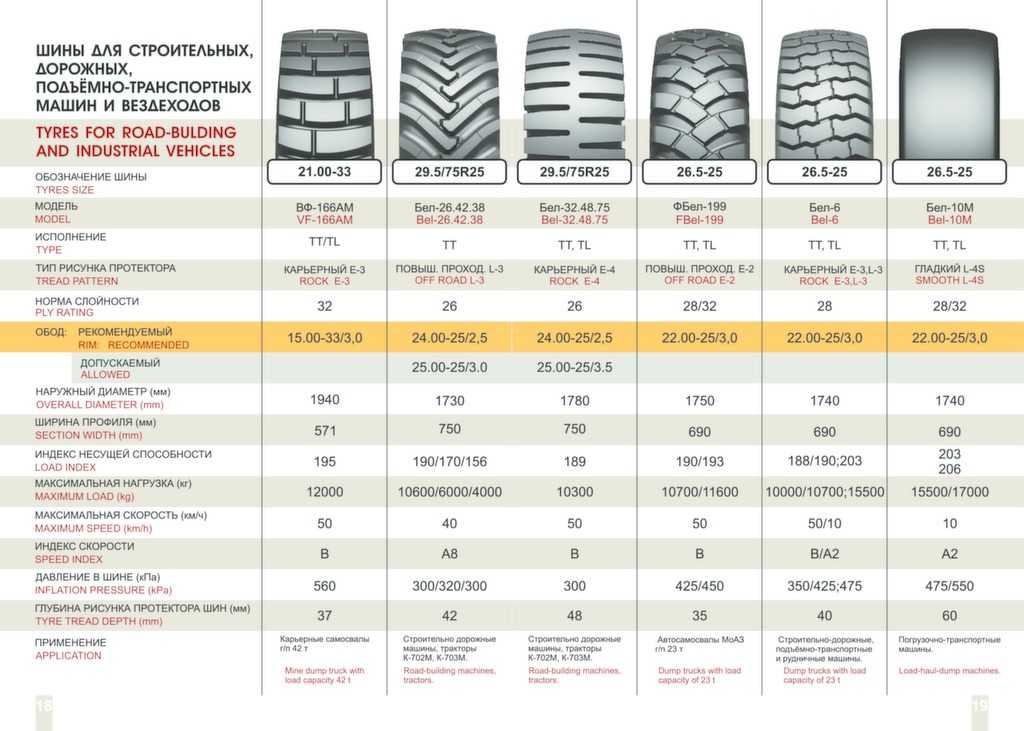 0-8.0 0-8.0 | |
| 235/60R15 | 6.5-8.5 | |
| 65 Series nine0010 | 185/65R15 | 5.0-6.5 |
| 195/65R15 | 5.5-7.0 | |
| 205/65R15 | 5.5-7.5 | |
| 215/65R15 | 6.0-7.5 | |
| 70 Series | 165/70R10 | 4.5-5.5 |
| 175/70R12 | 5.0-6.0 | |
| 175/70R13 | 5.0-6.0 | |
| 205/45R16 | 7.0 | |
| 185/70R13 | 5.0-6.5 | |
| 185/70R14 | 5.0-6.5 | |
| 195/70R15 | 5.5-7.0 | |
| 205/70R14 | 5.5-7.5 | |
| 185/70R15 | 5.0-6.5 | |
| 205/70R15 | 5.5-7.5 | |
| 215/70R15 | 6.0-7.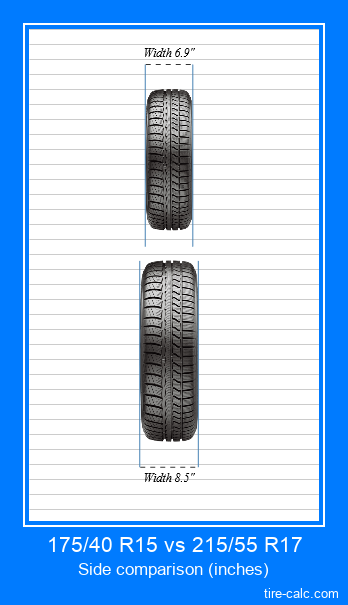 5 5 | |
| 82 Series nine0010 | 155R12 | 4.0-5.0 |
| 155R13 | 4.0-5.5 | |
| 165R13 | 4.0-5.5 | |
| 175R14 | 4.5-6.0 | |
| 185R14 | 4.5-6.0 | |
| 165R15 | nine0004 4.0-5.5||
| Profile | Designation in metric dimension | Permissible range of landing width of the disc |
|---|---|---|
| 75 Series | P205/75R15 | 5.5-7.5 |
| P215/75R15 | 5.5-7.5 | |
| P225/75R15 | 6.0-8.0 | |
| P235/75R15 | 6.0-8.0 | |
| 80 Series | P155/80R13 | 4.5-5. |